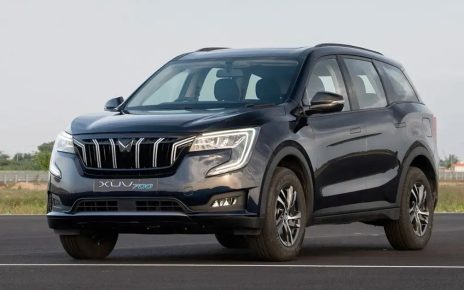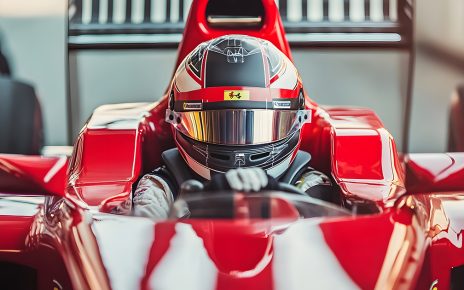Introduction to the European Automotive Glass Market
The European automotive glass market is undergoing a significant transformation, driven by innovations and shifting consumer preferences. As we move towards 2024 and beyond, understanding the trends shaping this industry becomes crucial for stakeholders. With the rise of electric vehicles, safety regulations tightening, and technological advancements on the horizon, it’s an exciting time to explore what lies ahead.
This blog delves into key insights from our research report and forecast for 2024-2032. From identifying major players in the field to unearthing growth drivers and challenges that impact market dynamics—there’s much to uncover. Join us as we navigate through emerging technologies in automotive glass, government regulations affecting production standards, regional variations across Europe, and projected market opportunities that could redefine success in this sector. Get ready to see how these factors will shape the future of automotive glass across Europe!
Key Players and Market Share Analysis
The European automotive glass market is competitive, featuring several key players who shape its dynamics. Companies like Saint-Gobain and AGC Glass Europe dominate the landscape with their extensive portfolios. They are recognized for high-quality products and innovative solutions.
Another significant player is Pilkington, known for advanced glazing technologies that enhance vehicle safety and aesthetics. Their strong presence underscores the importance of research and development in this sector.
Smaller yet influential companies also contribute to market diversity, focusing on niche segments or regional needs. These players often push the boundaries of technology.
Market share analysis reveals shifts toward consolidation as larger firms acquire smaller entities to expand their capabilities. This trend indicates a strategic approach to meet evolving customer demands while enhancing operational efficiencies across Europe’s automotive glass supply chain.
Growth Drivers and Challenges in the Market
The European automotive glass market is witnessing robust growth fueled by rising vehicle production and increasing consumer demand for advanced safety features. Innovations in manufacturing processes have enhanced the durability and performance of automotive glass, attracting more manufacturers to invest in this sector.
However, challenges persist. Fluctuating raw material prices can impact profit margins for companies involved in automotive glass production. Additionally, supply chain disruptions caused by geopolitical tensions or economic downturns pose significant risks.
Another hurdle is the constant evolution of technology. Companies must adapt quickly to stay competitive, which requires substantial investment in research and development. This fast-paced environment puts pressure on stakeholders to innovate continuously while managing costs effectively.
Balancing these growth drivers with emerging challenges will shape the future landscape of the European automotive glass market significantly.
Emerging Trends in Automotive Glass Technology
The automotive glass industry is witnessing a wave of innovation that promises to reshape vehicle design and functionality. One of the most exciting trends is the integration of advanced materials, such as laminated and tempered glass, providing enhanced safety and durability.
Smart glass technology is making strides too. This dynamic feature allows users to adjust transparency levels, optimizing visibility based on driving conditions or personal preference.
Moreover, manufacturers are focusing on lightweight solutions to improve fuel efficiency without compromising structural integrity. The use of polymers and composite materials offers a promising alternative here.
Another noteworthy trend involves increased use of UV-blocking coatings that protect passengers from harmful rays while maintaining comfort inside the vehicle.
Connectivity features are becoming more commonplace in automotive glass systems, enabling real-time data sharing with other vehicle components for improved performance and safety measures.
Impact of Government Regulations on the Market
Government regulations significantly shape the European automotive glass market. Stricter safety standards and environmental regulations push manufacturers to innovate constantly.
The introduction of advanced materials is partly due to these regulatory pressures. Glass products must now meet enhanced durability requirements, which often leads to higher production costs.
Moreover, emissions legislation encourages companies to develop lighter and more fuel-efficient vehicles. This trend directly influences the types of glass used in vehicle design, promoting alternatives that reduce overall weight without compromising safety.
On the sustainability front, mandates for recycling and eco-friendly manufacturing processes are gaining traction. Companies need to adapt by investing in green technologies or face penalties.
These evolving regulations create a complex landscape for stakeholders but also present opportunities for those willing to innovate and comply with new standards effectively.
Regional Analysis of the European Automotive Glass Market
The European Automotive Glass Market showcases distinct characteristics across various regions. Northern Europe, particularly Scandinavia, leads in demand for advanced glass technologies that enhance safety and energy efficiency.
Southern Europe exhibits a growing trend towards stylish automotive designs, boosting the need for aesthetically appealing glass solutions. Major markets like Italy and Spain are experiencing rapid growth due to increased vehicle production rates.
Central Europe stands out with its strong automotive industry base. Countries such as Germany and France emphasize innovative manufacturing processes that cater to electric vehicles.
Eastern Europe is witnessing rising investments from global players looking to capitalize on lower production costs. This shift presents both opportunities and competitive challenges within the market landscape.
Understanding these regional dynamics is essential for stakeholders aiming to navigate this evolving sector effectively. Each area contributes uniquely to the overall performance of the European Automotive Glass Market.
Forecast for 2024-2032: Projected Market Size and Growth Opportunities
The European automotive glass market is poised for significant growth from 2024 to 2032. Projections indicate a steady increase in demand, driven by the rise of electric vehicles and advancements in technology.
Innovations such as smart glass and integrated sensors are expected to capture attention. These features enhance safety and provide drivers with real-time information.
Emerging markets within Europe also present opportunities. Countries focusing on expanding their automotive production will likely see increased investments in automotive glass manufacturing.
Sustainability is becoming crucial too. Manufacturers are exploring eco-friendly materials that align with consumer preferences for greener options.
As these trends evolve, the market size could expand considerably, offering lucrative prospects for businesses ready to adapt and innovate. The next decade promises exciting developments across various sectors within the industry.
Conclusion: Future Outlook for the European Automotive Glass Market
The European automotive glass market is poised for significant transformation in the coming years. With advancements in technology and a growing emphasis on safety standards, we can expect to see innovative products that not only enhance vehicle aesthetics but also improve functionality.
Sustainability will play a crucial role as manufacturers increasingly focus on eco-friendly materials and processes. The push towards electric vehicles further amplifies this trend, presenting opportunities for specialized glazing solutions tailored to meet new energy efficiency demands.
Government regulations are expected to tighten, ensuring that compliance becomes a top priority for all players in the market. This could influence investment strategies and drive competition among existing companies while paving the way for new entrants.
As we move toward 2024-2032, consumer demand will likely shift towards smarter technologies integrated within automotive glass—such as heads-up displays or self-healing surfaces—which may redefine user experience altogether.
In essence, the future of the European automotive glass market holds immense potential driven by innovation and regulatory shifts. Stakeholders should be prepared to adapt swiftly to capitalize on these trends and maintain relevance amidst rapid changes.




